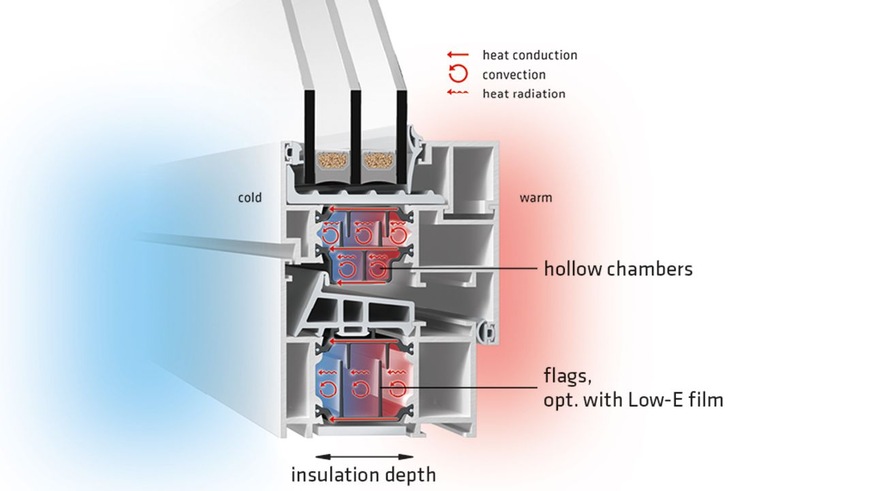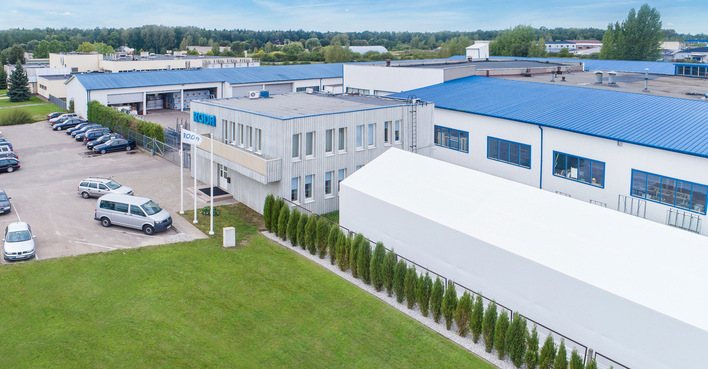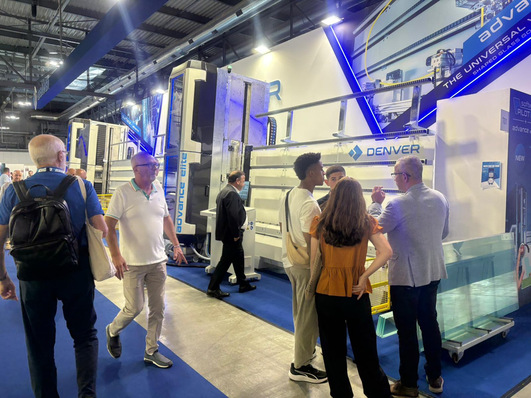The efficient thermal insulation of aluminium windows is barely visible from the outside, but it is a key factor for comfortable and energy-saving living. In order to reduce the heat transfer coefficient of the metal frame (Uf value), the aluminium shell on the outside is thermally separated from the inside.
For this, insulating bars made of construction plastics, such as insulbar from Ensinger, are inserted between the metal profiles. The direct heat dissipation via the aluminium is interrupted. An insulation zone is then created inside the frame assembly.
How to optimize the insolation zone
When designing this zone, the developer has various options to optimize thermal insulation and constructively implement a desired Uf value. The focus is on the different types of heat transfer. The heat always flows in the direction of the lower temperature through heat conduction (transmission), heat flow or entrainment (convection) and radiation (emission).
With metal frames that are not thermally separated, the heat flows from the inside to the outside. In hotter climes, heat penetrates from the outside into the often air-conditioned building. High energy losses are the result when the inside and outside temperature differ significantly.

Ensinger GmbH
However, the heat flow in winter can be reduced by an appropriately optimized thermal separation. It depends on the combination and fine tuning of many individual influencing variables in the insulation area. The thermal insulation webs are used, for example, from low-conductivity material with high strength, for example from glass fiber reinforced polyamide 66.
The reduction of wall thicknesses and the increase in the insulation depth of these insulation profiles are further possibilities to keep the heat transfer through transmission low. A reduction in the size of the cavities within the isolation zone minimizes air circulation. Thermal insulation profiles with hollow chambers or profiles with inwardly directed flags produce such smaller convective cells.
That is behind insulation strips
A very effective way is to use insulation strips with a flag on which a thin low-E film is applied. This aluminium foil ensures a high level of radiation reflection and works in a similar way to the principle of the thermos flask.
Finally, functional and mechanical limits are set for thermal optimization based on just a single influencing factor. For example, there are certain minimum wall thicknesses necessary to ensure the required strength of the thermal insulation profile.
However, if you fine-tune the influencing factors, you can achieve the optimum thermal insulation and the desired Uf value for the respective view width. This saves valuable energy and at the same time significantly improves living comfort.













